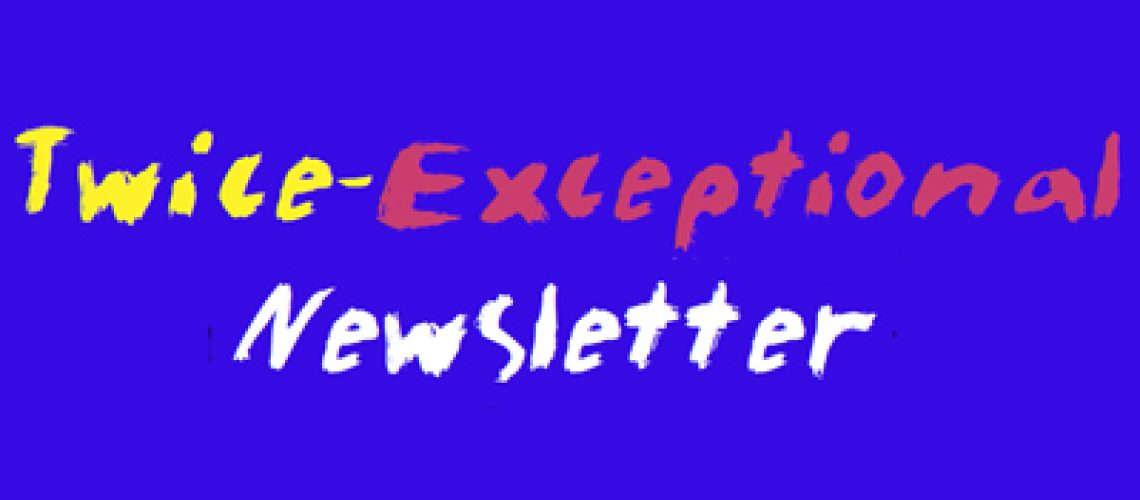This article originally appeared in the May 2015 edition of the 2e Newsletter. Click here to download a copy as a PDF.
I had the privilege of attending the premiere of Tom Ropelewski’s documentary 2e: Twice Exceptional at the Richmond International Film Festival on February 26, 2015. The film highlights a number of 2e students’ trajectory to senior year in high school at Bridges Academy, a school for 2e students located in Studio City, California.
While the concept of the film could be misunderstoodas an infomercial for Bridges, the truth is, those teachers and administrators get it. The documentary is powerful. Like Ross Greene’s book, Lost At School, Ropelewski’s documentary includes perspectives from the kids, their parents, teachers, and administrators; only in this case, everyone understands the unique internal lives and struggles these kids experience every single day.
Hearing the students talk about their journey to understand themselves and celebrate their passions is inspiring. Listening to the teachers candidly discuss their own journeys as well as their deep understanding of their students’ experiences is nothing short of moving. In fact, many of the teachers describe themselves as 2e.
Then there are the parents. As one mother describes her son’s experience with Tourette syndrome and his uncontrollable screeching in a restaurant, the audience expects that she will describe her own embarrassment or helplessness. Instead, she recognizes her son’s bravery. Another parent describes her relief when her son receives a diagnosis; now there is something to understand and work with.
There are great lessons for everyone in this documentary — for example, lessons on how parents hold on to and respect their child’s quirkiness while nurturing their passions, and lessons in how a teacher finds the entry point to teach a child a skill in an unconventional way. One example that stands out is the English teacher, a lover of symbols and metaphors, who tries to get through a piece of great literature with his class. However, there is one student who keeps asking practical questions about locations and geography in the storyline. The teacher finally realizes that this student’s insatiable curiosity about the route the characters are taking is getting in the way of his accessing the story beneath the text. The teacher suggests the student take the locations and map them. When he does this, suddenly the student is available to understand and discuss the nature and meaning of the story.
Another striking lesson involves a student who, like many 2e students, struggles with writing. She is immensely talented at drawing but astutely describes her experience with writing as “thinking in paragraphs, talking in sentences, and writing in words.” Instead of assigning her papers to write, her science teacher allows her to submit cartoons on each of the elements she is learning. A mainstream teacher may balk at this strategy, arguing that “she will never learn to write if we don’t make her write.” However, the student’s teachers recognized that trying to force her to write would only lead to a power-struggle, to immense frustration, and to the student internalizing negative messages about her abilities. By allowing her to express herself in a way that was meaningful to her, she was able to learn the skills needed to show her knowledge. By the time she was a senior, this student was capable of writing pages and pages.
The teachers and administrators in the film ascribe to the “5, 10, 15 Theory,” a theory about asynchronous development that states that a child may be 10 chronologically, 15 in some academic areas, and 5 socially. The film makes the point that when you don’t know who you are and your asynchronous development causes confusion and frustration, everything and everyone is threatening. For this reason, Susan Baum, Director of the 2e Center for Research and Professional Development (housed on the Bridges Academy campus), notes that teachers and parents have to changehow they react to twice-exceptional children and focus on their gifts rather than on what they cannot do.
As we see in the film, the teachers use the students’ strengths to enable them to reach their potential. While they help the students with their challenges, that’s not the main focus. These teachers are all about the process in a very Carol Dweckian way. [Ed.: Dweck is the author of the book Mindset.] They serve as a contrast to the educators and parents we often see
who myopically focus on behavior and product. By the end, we see the parents as heroes and the teachers as champions. But the unstoppable forces of motivation in this inspiring film are the kids.

Author: Julie F. Skolnick M.A., J.D.
Julie Skolnick, M.A., J.D., is the Founder of With Understanding Comes Calm, LLC, through which she passionately guides parents of gifted and distractible children, mentors 2e adults, and collaborates with and advises educators and professionals on bringing out the best and raising self-confidence in their students and clients.


